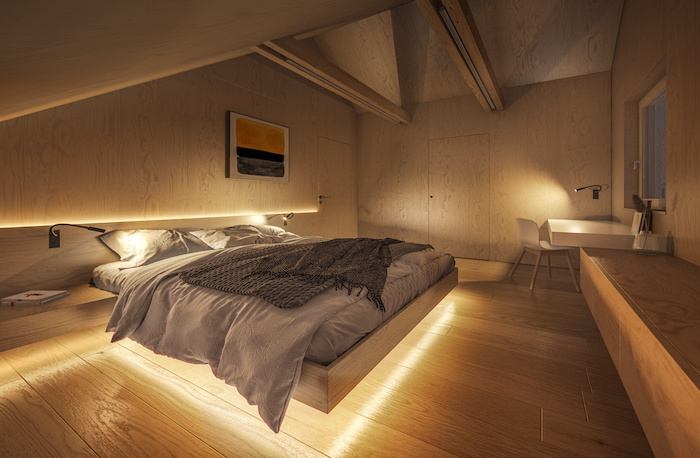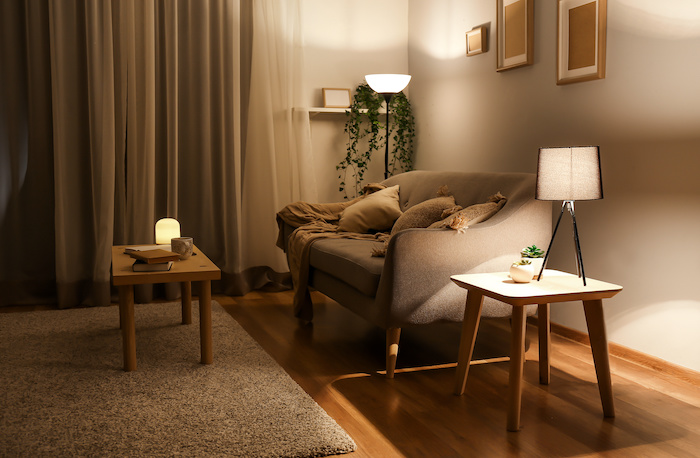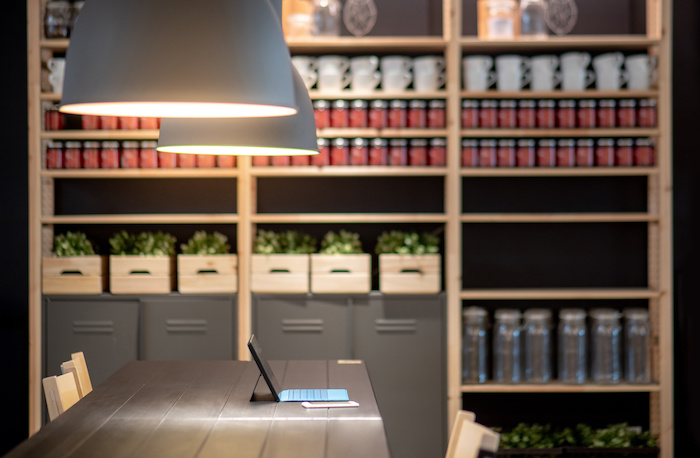Lighting Tips for Creating Flexible Spaces in the Home

April 11, 2022
Over the past two years, people have spent more time than ever at home, meaning our spaces have had to work harder, serving multiple purposes at once. We’ve also been doing things at home we’ve not had to do before or as often, like working or working out. And for the most part, people don’t have the luxury of enough space to separate activities. But there are clever ways to create flexible spaces at home using lighting; here are some tips.
1. Layer your lighting
Layering light allows you to create zones for comfort or utility – and even make an impact with design.
Consider the functions you need your space to fulfill before choosing the best lighting. Overhead fixtures are ideal for hard-working places like a kitchen or office, where you want to work on tasks without users’ shadows getting in the way.
If the kitchen also needs to serve as a dining room or the office as a bedroom, it’s simple enough to use lighting to transform the feel of the space.
LED lights or spotlights are ideal for brightening the overall kitchen, while under-counter LED strip lights or pendants with a dimmer switch can help make a dining space feel more intimate.
If a bedroom is doubling as an office space, placing lamps around the room creates a more relaxing atmosphere once work is done for the day.

2. Bulbs for different purposes
Don’t underestimate the impact a lightbulb can have on a space. The color of the light can instantly change the mood of a room.
Cool and bright bulbs are a perfect fit for the kitchen or workspaces because they mimic daylight. However, these bulbs can be harsh on the eyes when you’re looking to relax, so add warm-tone light bulbs in lamps to create a cozy feeling come sunset.
In combined work and living spaces it may seem difficult to unwind after a day of work. Switching off the bright overhead fixtures, and turning on warmly-lit lamps, is a great way to signify a change in a space’s function.
Floor lamps are ideal alternative to bright overhead lights but still want some direct light while working on tasks.

3. Make a statement
A bold lighting choice can really make an impact and help separate spaces in the home. A statement fixture over a dining table or kitchen island in an open floor plan not only provides plenty of illumination but can help signify different zones.
In an office space, consider a bold floor lamp that offers the brightness of an overhead lamp directly over the workspace without changing up the lighting in the rest of the space.
For a fun option, consider color-changing LED strips. These work particularly well if there’s an alcove that’s home to a desk or dressing table that you’d like to differentiate from the rest of the surrounding space. Plus, they offer the option of changing the color of the light depending on the user’s mood, adding a wow factor to the home.
4. Create the illusion of space
When a space is meant to fulfill multiple functions, it’s easy for it to feel overcrowded. Great lighting can not only help differentiate between zones but also create the illusion of more space.
With some clever design tricks, you can distribute more light around a space and make it feel much larger than it is.
Use mirrors or shiny surfaces to help reflect light, too. Place mirrors across from lights or at a 90-degree angle for the best results. LED lights are especially effective to create the illusion of space because they offer a more direct distribution of light – rather than diffusing it.
—By Michael Meiser, president of Lumilum
More News
April 16, 2024 | Awards & Events
Kips Bay Boys & Girls Club Honors Ellie Cullman, Cosentino
April 15, 2024 | Trends & Inspirations
Houzz: Renovation Slows, but Design Pros Optimistic
April 15, 2024 | KBB Collective
Outdoor Kitchen Style: Maximizing Style & Functionality in Small Spaces
April 14, 2024 | Awards & Events
Coverings 2024 Announces 10th Class of Rock Stars
April 13, 2024 | Awards & Events
ICFF Announces 2024 Programming and Features
April 2, 2024 | Sponsored
Whirlpool Corp. Brings Purposeful Innovation Home